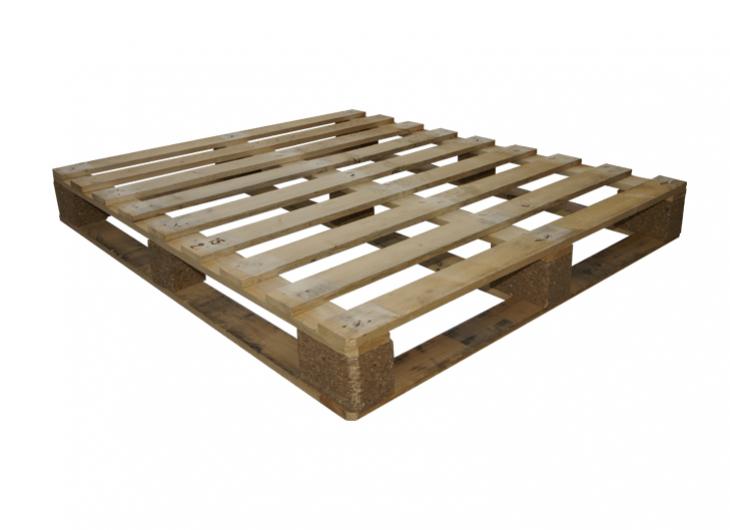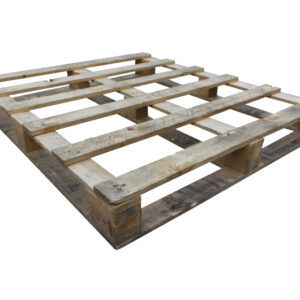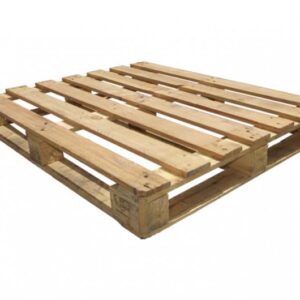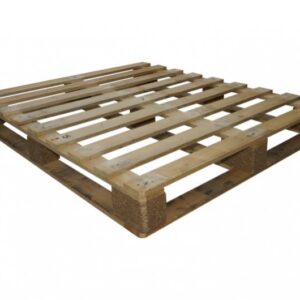The Unsung Hero of Logistics: Why the Grade A Short Board Perimeter Base Pallet is Your Warehouse MVP
In the high-stakes world of supply chain management, choosing the right pallet isn’t just about having something to stack boxes on; it’s about investing in the foundation of your entire operation. A great pallet minimizes product damage, maximizes cube utilization, and ensures seamless flow, especially when dealing with heavy loads or precision automation.
If you are currently evaluating your fleet, or if you’re looking for the gold standard in durability and standardization, you’ve undoubtedly encountered the Grade A Short Board Perimeter Base Pallet (1200 x 1000 mm).
This isn’t just a basic wooden block; it’s a meticulously engineered heavy-weight workhorse designed to handle the most demanding environments. If efficiency and long-term cost savings are your goals, understanding the nuances of this specific pallet design is essential.
Decoding the Jargon: What Makes This Pallet “Grade A”?
When logistics professionals talk about the 1200 x 1000 mm standard—sometimes referred to as the UK, European, or Australian standard—they are referring to one of the most common footprints globally. But the real value lies in the descriptors attached to it: Grade A, Short Board, and Perimeter Base.
Let’s break down exactly what you are investing in when you choose this specification.
1. Grade A: The Quality Promise
When a wood pallet is designated “Grade A,” you are guaranteed the highest tier of commercial longevity and structural integrity.
What Grade A means for you:
- Minimal Repairs: Grade A pallets are either new or have been meticulously repaired to near-new condition using standard-sized, quality replacement components.
- Aesthetic and Functional Consistency: You won’t find major split boards, protruding nails, or significant discoloration. This uniformity is crucial for automated systems that rely on precise dimensions.
- Maximum Remaining Service Life: These pallets offer the longest service life in the secondary market, making them highly reusable and delivering the best return on investment (ROI).
2. Short Board Configuration (1200 x 1000 mm)
The term “Short Board” refers to the orientation of the top deck boards. In a 1200 x 1000 mm pallet:
- Long Boards (1200mm): The stringers (the long, continuous pieces connecting the blocks) run along the 1200 mm side.
- Short Boards (1000mm): The deck boards running across the top are typically 1000 mm long.
This configuration is critical because it dictates how lift equipment interacts with the pallet. This design typically provides optimal structural support and handling access, ensuring proper weight distribution across the deck.
3. Perimeter Base (Full Base)
Perhaps the most important feature for heavy-duty warehousing, the perimeter base transforms a standard skid into a secure, stable platform.
A perimeter base means the pallet has bottom deck boards running along all four sides—the two 1200 mm sides and the two 1000 mm sides. These cross runners connect the bottom blocks, creating a complete frame, akin to a snowshoe for the pallet.
The functional advantage of a perimeter base:
- Superior Racking: It allows the pallet to be safely supported on cantilever or edge-beam racking systems without risk of tipping or cracking under a heavy load. You get stability on the narrowest points of the pallet.
- Increased Static Load: The full base distributes the weight more evenly, significantly improving the pallet’s capacity when stacked on the floor (static load).
- Improved Handling: It ensures the pallet remains rigid, even when subjected to the stress of heavy-duty material handling equipment.
Pallet Performance: Why “Heavy Weight” Matters for Your Bottom Line
When you combine Grade A standards with a Perimeter Base design, you are moving beyond simple transport and into dedicated, heavy-duty storage and throughput.
The “Heavy Weight” designation means the pallet is constructed with thicker deck boards, robust stringers, and often more densely packed blocks, making the pallet itself heavier, but vastly stronger.
Table 1: Key Performance Benefits of the Heavy Weight Design
| Feature | Direct Benefit to Your Operation | Impact on ROI |
|---|---|---|
| High Dynamic Load | Capable of supporting heavier shipments during movement (forklift transit, conveyor belts). | Reduced risk of catastrophic product loss during transit. |
| Strong Racking Load | Securely holds maximum load capacity when stored high in narrow-aisle or edge-beam racking. | Allows for higher density storage and optimized warehouse cube space. |
| Grade A Integrity | Uniform dimensions and guaranteed material quality. | Seamless integration with automated systems, conveyors, and robotic handling. |
| Perimeter Base | Maximum stability and structural rigidity. | Significantly longer pallet lifespan; less replacement cost. |
The Data Sheet: Specifications of the 1200 x 1000 mm Heavy Weight Pallet
For procurement managers, the specifications are non-negotiable. Here is the typical performance data you should expect from a certified Grade A Short Board Perimeter Base Pallet (1200 x 1000 mm).
These figures represent conservative estimates and are dependent on uniform weight distribution and high-quality timber construction.
Table 2: Pallet Specifications and Load Ratings
| Specification | Dimension / Value | Explanation |
|---|---|---|
| Nominal Dimensions | 1200 mm x 1000 mm | Standard footprint maximizing compatibility. |
| Pallet Type | Short Board Perimeter Base | Full-frame base for superior stability. |
| Entry Type | True 4-Way Entry | Can be accessed by a forklift from all four sides. |
| Approximate Weight (Empty) | 25 kg – 32 kg | Reflects the use of more substantial, high-density timber components. |
| Static Load | Up to 6,000 kg | The maximum weight the pallet can bear when resting on a solid, flat floor (stacked). |
| Dynamic Load | Up to 2,000 kg | The maximum weight the pallet can bear when being moved by a forklift. |
| Racking Load | 1,200 kg – 1,500 kg | The maximum weight the pallet can bear when resting unsupported on beam racking. |
| Material | HT Treated Solid Wood | Heat-Treated (ISPM 15 compliant) for international shipping. |
The Investment Perspective: Saving Money by Spending More
It may seem counterintuitive, but opting for a high-quality, heavy-duty Grade A pallet often results in significant long-term cost savings compared to purchasing cheaper, lighter-weight alternatives.
1. Reduced Product Damage: The vast majority of product damage in a warehouse is caused by unstable or compromised pallets. Robust racking load capacity and structural integrity drastically reduce the risk of collapses or shifting loads.
2. Fewer Replacements: A Grade A pallet’s lifespan can be several times longer than a flimsy Grade C or non-standard pallet. While the initial unit cost is higher, the cost per use drops dramatically over time. You spend less time and money managing pallet repairs and replacements.
3. Automation Reliability: If your warehouse utilizes automated storage and retrieval systems (AS/RS) or high-speed conveyors, dimensional consistency is non-negotiable. A warped or poorly maintained pallet can trip up an entire automated line, leading to costly downtime. The Grade A standard ensures the precision needed for modern logistics.
4. Global Compliance: Since these pallets are typically constructed using Heat Treated (HT) lumber, they comply with ISPM 15 standards, making them ready for immediate export without costly delays or further treatment processes. This immediate compliance simplifies your global supply chain.
Frequently Asked Questions (FAQ)
Q1: Can I use this perimeter base pallet with a standard pallet jack?
Yes, absolutely. The design of the perimeter base still incorporates clear openings at all four entry points, ensuring smooth handling by standard manual pallet jacks and powered lift trucks. The full base simply adds stability, especially when placing the pallet down.
Q2: What is the difference between this “Short Board” pallet and a European (EUR) pallet?
While the 1200 x 1000 mm is a widely used format, the European Standard Pallet (EUR) is typically defined as 1200 x 800 mm. Additionally, the construction standards (e.g., specific nails required, exact board thickness) for certified EUR Pallets (EPAL) are highly regulated. This 1200 x 1000 mm pallet is an industry-standard heavy-duty workhorse, often used interchangeably with the ‘Industrial Pallet’ or ‘UK Standard,’ and is built to withstand high load capacities similar to quality EPAL structures.
Q3: How do I maintain a Grade A pallet to ensure its longevity?
The best maintenance is preventative.
- Handle with Care: Ensure forklift drivers use the proper entry points and avoid high-speed impact.
- Inspect Regularly: Before introducing the pallet back into your high-throughput system, check for broken perimeter boards or major splits that could compromise the racking load capacity. A quick repair keeps it in the Grade A classification longer.
- Keep Dry: Store pallets indoors or under cover to prevent moisture absorption, which degrades wood strength and increases weight.
Q4: If I don’t use racking, is the perimeter base still necessary?
While the perimeter base is crucial for racking, it is also highly beneficial for floor stacking (static loads). The full frame prevents the bottom stack from collapsing or sinking into softer floor surfaces, ensuring that the heavy weight of the upper stacks is distributed efficiently and safely.
Conclusion: Build Your Success on a Solid Foundation
In logistics, you are only as strong as your weakest link. Choosing the Grade A Short Board Perimeter Base (1200 x 1000 mm) heavy-weight pallet is a decision that elevates the entire quality and safety profile of your warehousing operation.
You are investing in a proven structure, superior material integrity, and the capability to handle your heaviest loads efficiently and securely in any high-density storage environment.
Ready to solidify your supply chain foundation? Make the smart choice and upgrade your fleet to the heavy-weight champion of industrial logistics.




Reviews
There are no reviews yet.